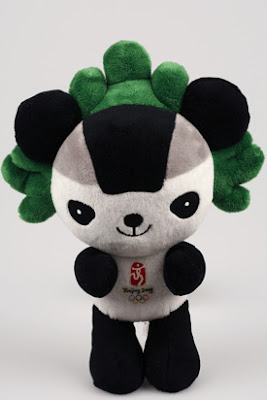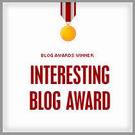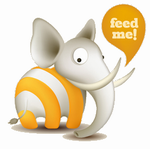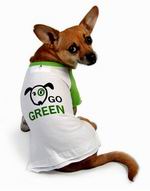It's surprising to find out that the first official Olympic mascot was as recent as the 1972 Munich Games. But it's been a go since then, with sometimes as many as five mascots for a single Olympics.
Have a look at the mascots through the years:
1972 Munich, Germany – Waldi the Dachshund
 Waldi was the first official Olympic mascot. Modelled on a real Dachshund (the wonderfully named Cherie von Birkenhof), it represented resistance, tenacity and agility, all necessary attributes in world-class athletes. Photograph: paulhillsdon
Waldi was the first official Olympic mascot. Modelled on a real Dachshund (the wonderfully named Cherie von Birkenhof), it represented resistance, tenacity and agility, all necessary attributes in world-class athletes. Photograph: paulhillsdon1976 Montreal, Canada – Amik the beaver
 Amik, the beaver from the Montreal 1976 Olympic Games. Amik is an Ojibwe word for beaver. Representing hard work, the beaver is one of Canada’s native animals. © IOC (courtesy of V&A Museum of Childhood)
Amik, the beaver from the Montreal 1976 Olympic Games. Amik is an Ojibwe word for beaver. Representing hard work, the beaver is one of Canada’s native animals. © IOC (courtesy of V&A Museum of Childhood)1980 Moscow, Russia – Misha, Mishka or The Olympic Mishka bear
 Misha the bear was designed by Victor Chizhikov, a children’s books illustrator. One of the most popular mascots, Misha had his own TV cartoon. Photograph courtesy of Jussi Katajala
Misha the bear was designed by Victor Chizhikov, a children’s books illustrator. One of the most popular mascots, Misha had his own TV cartoon. Photograph courtesy of Jussi Katajala1984 Los Angeles, USA – Sam the eagle
 Sam, the American eagle, from the Los Angeles 1984 Olympic Games. Sam was designed by Bob Moore, an artist for Disney. © IOC (courtesy of V&A Museum of Childhood)
Sam, the American eagle, from the Los Angeles 1984 Olympic Games. Sam was designed by Bob Moore, an artist for Disney. © IOC (courtesy of V&A Museum of Childhood)1988 Seoul, South Korea – Hodori the tiger
 Seoul had a pair of tigers for mascots, but Hodori (“Ho” meaning tiger and “dori” is the male diminutive in Korean) caught the imagination and Hosuni, the female counterpart, was rarely spotted. Photograph: wikipedia
Seoul had a pair of tigers for mascots, but Hodori (“Ho” meaning tiger and “dori” is the male diminutive in Korean) caught the imagination and Hosuni, the female counterpart, was rarely spotted. Photograph: wikipedia1992 Barcelona, Spain – Cobi the dog
 Cobi, a Catalan sheepdog drawn in Cubist style had more than a little of the Picasso about it. It was designed by Javier Mariscal, appeared in several advertisements and starred in a TV series, The Cobi Troupe. Photograph: wikipedia
Cobi, a Catalan sheepdog drawn in Cubist style had more than a little of the Picasso about it. It was designed by Javier Mariscal, appeared in several advertisements and starred in a TV series, The Cobi Troupe. Photograph: wikipedia1996 Atlanta – Izzy (What is it?)
 Izzy’s name is derived from “What is it?” Despite an animated television special “Izzy’s Quest For Olympic Gold” and a video game called “Izzy’s Quest for the Olympic Rings” the 1996 mascot remains one of the least popular Olympic mascots. Photograph: Katrinas Toys
Izzy’s name is derived from “What is it?” Despite an animated television special “Izzy’s Quest For Olympic Gold” and a video game called “Izzy’s Quest for the Olympic Rings” the 1996 mascot remains one of the least popular Olympic mascots. Photograph: Katrinas Toys2000 Sydney, Australia – Syd, Olly and Millie
The mascots, Syd, Olly and Millie were designed by Matt Hatton and Jozef Szekeres. Representing earth, air and water, Olly, the kookaburra, was a symbol of generosity. Syd, the platypus, stood for the energy and vigour of Australia (and Australians). Millie, the echidna, was a symbol of the Millennium, showing how technologically advanced the country was in 2000.
 Syd the Platypus was named for Sydney, the host city in 2000. © IOC (courtesy of V&A Museum of Childhood)
Syd the Platypus was named for Sydney, the host city in 2000. © IOC (courtesy of V&A Museum of Childhood) Millie the Echidna was named for Millennium – it was 2000. © IOC (courtesy of V&A Museum of Childhood)
Millie the Echidna was named for Millennium – it was 2000. © IOC (courtesy of V&A Museum of Childhood)2004 Athens, Greece – Athena and Phevos

Athena and Phevos were the big-feeted Greek mascots. They were based on an archaic terracotta daidala (religious artifact) at the National Archaeological Museum of Athens. Photograph: wikimedia
2008 Beijing, China – Beibei, Jingjing, Huanhuan, Yingying and Nini
Drawing inspiration from the five Olympic rings, four of these playful characters embody the characteristics of China’s favourite animals – the fish (Beibei), panda (Jingjing), Tibetan antelope (Yingying) and swallow (Nini). The fifth (Huanhuan) represents the Olympic flame. The five elements of nature are represented too – the sea, forest, fire, earth and sky.
Each of the mascots has a rhyming two-syllable name and when you put their names together – Bei Jing Huan Ying Ni – they say “Welcome to Beijing”.
 Beibei © IOC (courtesy of V&A Museum of Childhood)
Beibei © IOC (courtesy of V&A Museum of Childhood)2012 London – Wenlock and Mandeville
Formed from two blobs of molten steel from a steelworks in Bolton, or so the legend goes, Wenlock is named after Much Wenlock, the town in Shropshire which held the Olympian Society Annual Games, a forerunner of the modern Olympics. Mandeville is named for Stoke Mandeville Hospital, which organised the Stoke Mandeville Games, the precursor of the Paralympics.
They each have cameras for eyes and London Taxi headlights with the first letter of their name. Official Wenlock and Mandeville mascot dolls are available on the VisitBritain Shop.
They each have cameras for eyes and London Taxi headlights with the first letter of their name. Official Wenlock and Mandeville mascot dolls are available on the VisitBritain Shop.
 Wenlock wears five friendship bracelets, each one the colour of an Olympic ring. He has three points on his head, representing the three places on the podium (Gold, Silver and Bronze).
Wenlock wears five friendship bracelets, each one the colour of an Olympic ring. He has three points on his head, representing the three places on the podium (Gold, Silver and Bronze).

via cheapflights.co.uk

















































